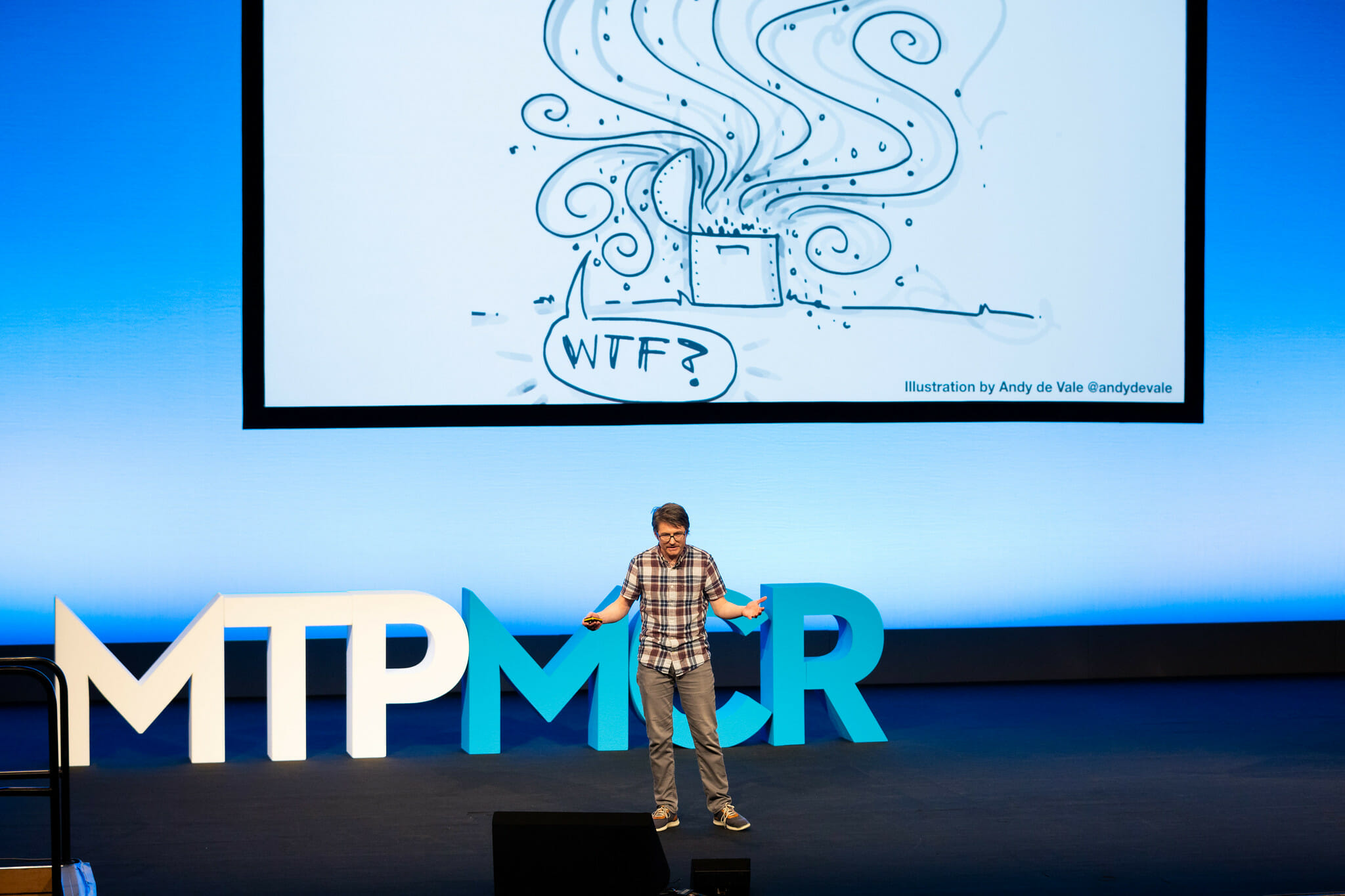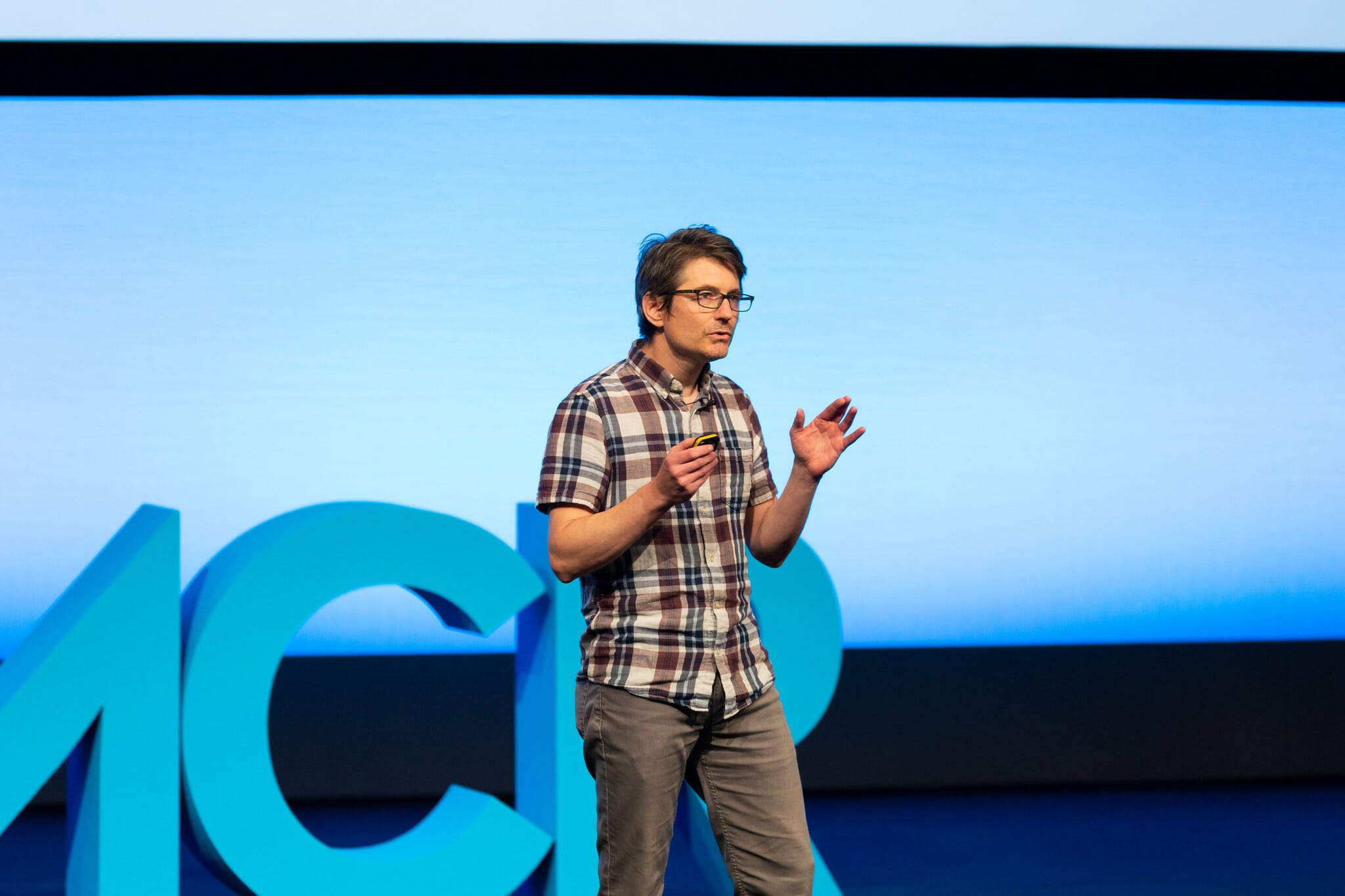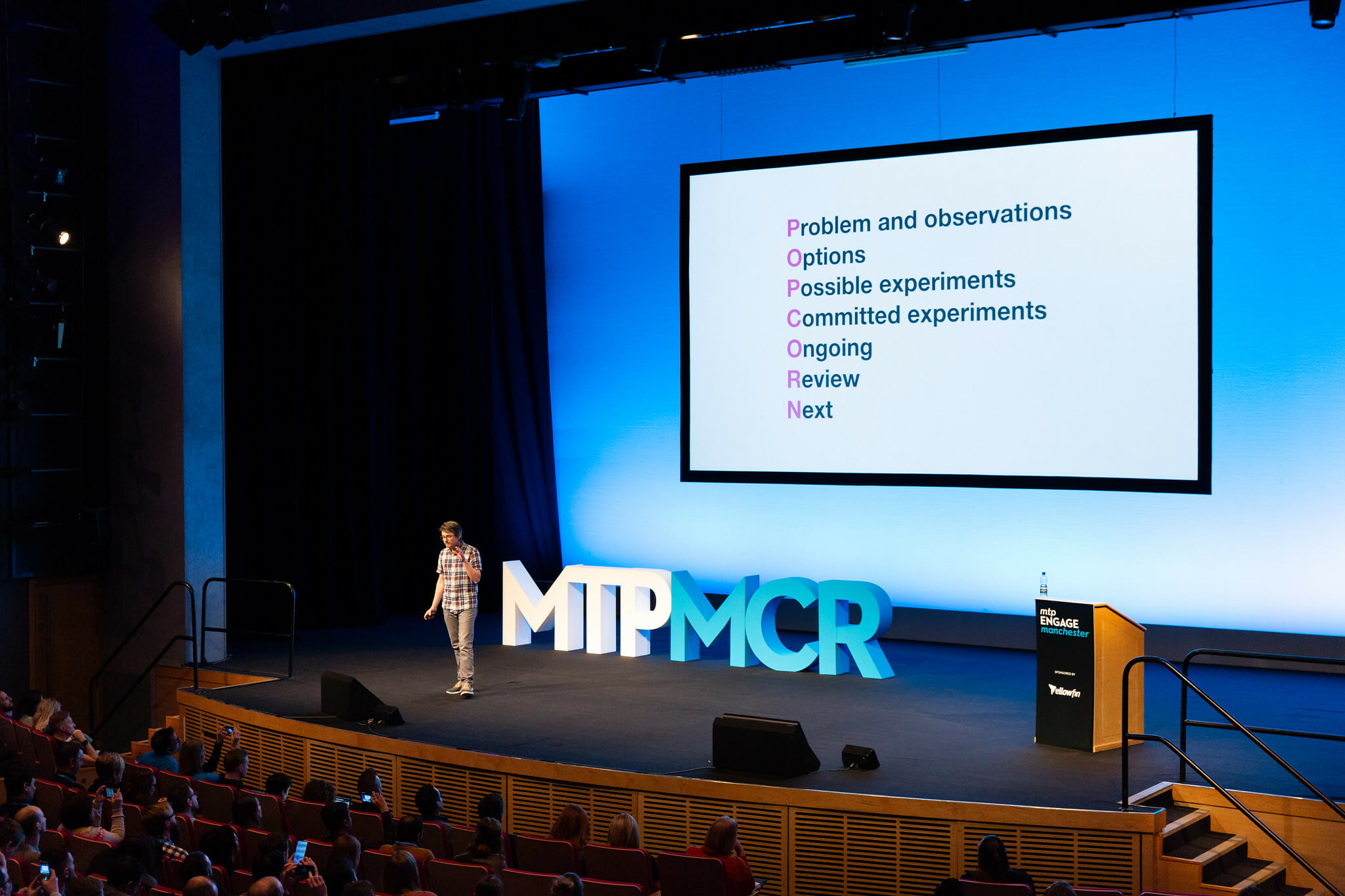The Beautiful Mess by John Cutler [Mind the Product]

John Cutler is a Product Evangelist at Amplitude who helps product teams to become happier and more effective. Here, in his 2020 MTP Engage Manchester talk, he explains how we must all embrace ‘the beautiful mess’ and learn to navigate change in order to be more successful.
Watch the video to see his talk in full. Or read on for an overview of his key points:
- Product is hard everywhere
- Change is always experimental
- Be a popcorn person, not a ‘certain-way’ person
- Embrace “the beautiful mess”
Experimenting with Experiments
John describes an activity he facilitated for 75 companies over the course of one hour. He got employees to share two things:
- To describe an experiment that increased momentum
- To describe an experiment that didn’t pan out (and what they learned from it)
John wanted to gain a better understanding of the ecosystem of attempted change. What he found was that with over 1000+ years of experience in one room the same answers were spread across both sides of success, whether they involved weekly targets, discovery sprints, or decision authority, it was just a mess of context, experimentation, “best” practices, and real human stories.
Product is Hard
What’s clear, John explains, is that product is hard everywhere – no one has it figured out. It’s not always dysfunctional or political, but it’s hard and it’s uncertain.
As product people, we’re always looking to change, be that culturally, from a business perspective, or in our own personal careers. With that change comes an amount of required learning and unlearning. Without this learning, it’s extremely difficult to move forward.
But how do we find the right way to change?

John introduces a scenario most of us will quickly recognise: your colleague has posted a magic-cure blog post in a Slack channel – it’s something about how a certain company works, the main takeaway being that they’re doing it differently. Maybe it’s something revolutionary, or maybe something more normal, but your colleague has sensed a potential utopia – the next “magic way”. John explains that these posts tend to generate 1 of 3 responses:
- Optimists ask: “Why can’t we work like that”
- Sceptics say: “well no one works like that in the real world”
- Then there’s those who cross their arms and say: “well actually, I’ve been working on my own process”
John describes a need for metrics when looking at employing any kind of change. It’s outcomes, not outputs he tells us.
How to approach change
Here are some of the do’s and don’ts he recommends when considering change:
DO
- Adapt and the solution for your business – everyone is unique
- Approach change with intention – ask yourself what outcomes you want to see
- Prepare yourself for the messy reality, it’s always more complex than the perceived ideal
DON’T
- Be too prescriptive – remember, there is no right way
- Copy and paste – a blog post is not a blueprint
- Trust the sceptics, you can’t allow yourself to be paralysed in the face of change
Change is discontinuous
Once you’ve something that works, great! But what’s next? Because change is discontinuous, erratic and non-linear which means that what works one year may stop working the next. You always have to be ready for change.

John describes this as an exercise – one you have to work on and to practice. Then, as an individual, a group, a small team, and a company, you have to get good at practising practice. Only then you can interrogate your data and assess the experiment. Always be asking yourself, whether this new solution is a good one? Then ask, is it good enough for now?
Fighting the urge to quit
Sometimes companies quit on change and John describes the general patterns he sees in businesses reporting that give consistently negative results:
- Companies try something once, maybe twice, but quit too early
- Companies don’t approach change actively. Instead, they sit on the solution waiting for it to work, rather than making it deliberate practice
Here are some things to keep in mind:
- You can only change so much at once
- You need some skill to pick things that are reasonable to try
- You need to avoid losing the essence of your solution
- You need to make time for change
Being a change agent
Finally, John describes how we can measure a change in progress and references Claudio Perrone’s Popcorn Flow of continuous evolution through ultra-rapid experimentation.
The different states are as follows:
- Problems and Observations ie. Stresses, issues, emotional
- Options ie. 3 options of change – what are you doing now? What could you do? Should you do nothing?
- Possible experiments – Set a specific experiment, a timeline, duration, expectations
- Committed experiments – Plan and execute
- Ongoing – Practice change
- Review – Analyze your outcomes: What happened? What did we learn? What did we expect?
- Next – Choose how to proceed: Is more change needed? More practice? A new solution? Or is this good for now?

It’s great if everyone is on board, but sometimes it will take an individual to bring change. If you’re that person, then make sure you’re the popcorn person, not the person who will only stick to a certain way. Lead with the why not the way and the way will come, What’s needed is a culture that values and rewards, safety, humility and curiosity.
If you do all of that, you, and of those around you will be ready to embrace the beautiful mess.
The post The Beautiful Mess by John Cutler appeared first on Mind the Product.
Source: Mind the Product https://www.mindtheproduct.com/the-beautiful-mess-by-john-cutler/

Post a Comment